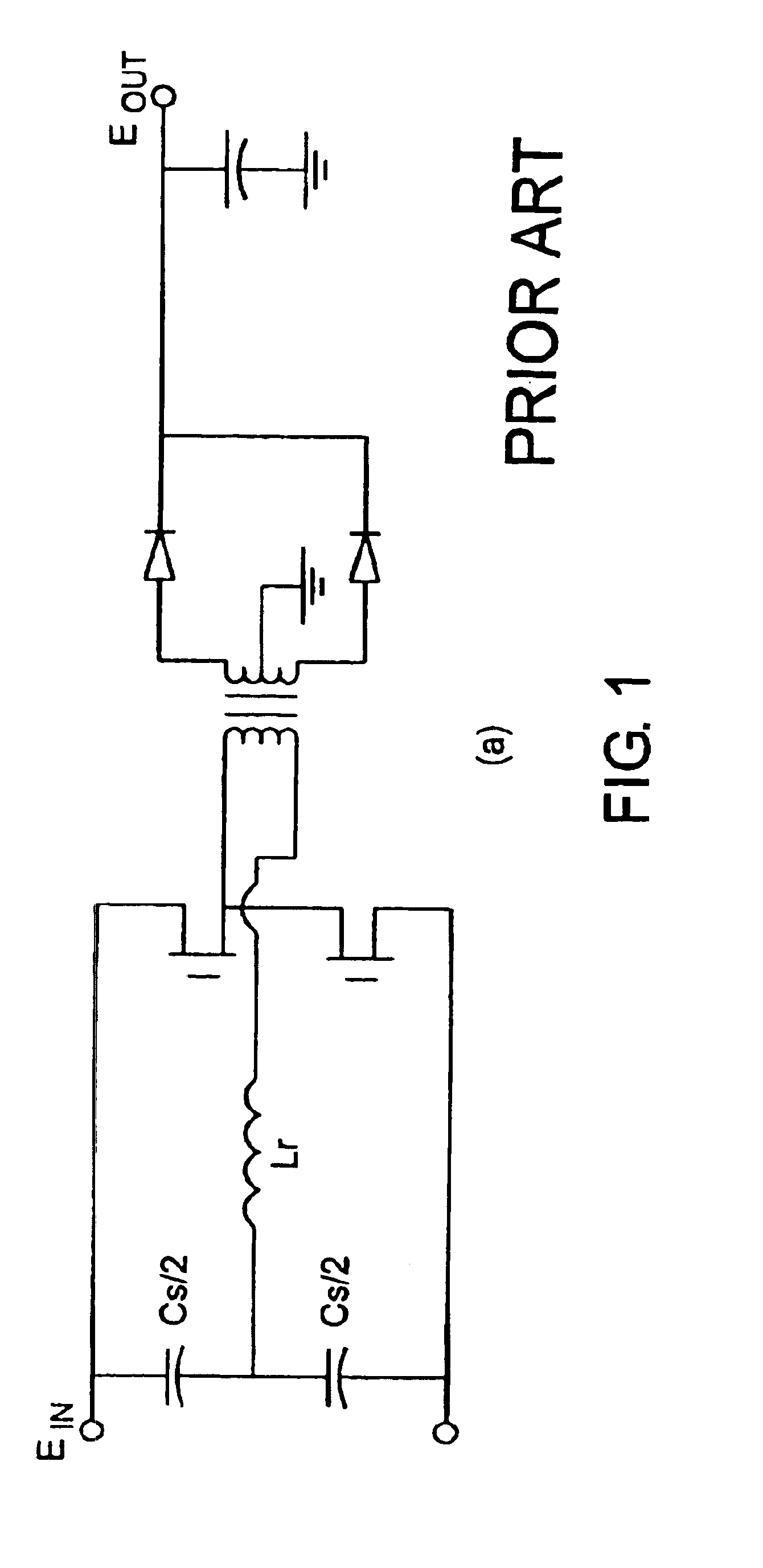Resonant converter with phase delay control
a phase delay control and converter technology, applied in the field of resonant converters, can solve the problems of increasing hard switching losses in a typical pwm converter, affecting the efficiency of an input power supply, and generating greater electromagnetic interference (emi), so as to improve feedback control, high switching frequency, and high efficiency
- Summary
- Abstract
- Description
- Claims
- Application Information
AI Technical Summary
Benefits of technology
Problems solved by technology
Method used
Image
Examples
Embodiment Construction
[0049]The present invention provides a resonant converter with a phase delay control implemented in an IC to obtain high efficiency and broad output range while reducing EMI. The phase delay control is implemented with a feedback arrangement that provides a current sense to determine a phase angle error measurement. The phase angle error measurement, derived from a comparison with a reference phase angle, is used to control a VCO that can modify a switching frequency to adjust the phase angle of the resonant tank voltage and current.
[0050]Referring to FIGS. 8-13, graphical illustrations of the relationship between power output, switching frequency and phase angle are provided for series, parallel and LCC resonant converters. In FIGS. 8, 10 and 12, the relationship between the output power and phase angle is substantially linear over a broad range of phase angles for each of the several types of resonant converters. In contrast, however, FIGS. 9, 11 and 13 illustrate that the power o...
PUM
 Login to View More
Login to View More Abstract
Description
Claims
Application Information
 Login to View More
Login to View More - R&D
- Intellectual Property
- Life Sciences
- Materials
- Tech Scout
- Unparalleled Data Quality
- Higher Quality Content
- 60% Fewer Hallucinations
Browse by: Latest US Patents, China's latest patents, Technical Efficacy Thesaurus, Application Domain, Technology Topic, Popular Technical Reports.
© 2025 PatSnap. All rights reserved.Legal|Privacy policy|Modern Slavery Act Transparency Statement|Sitemap|About US| Contact US: help@patsnap.com



